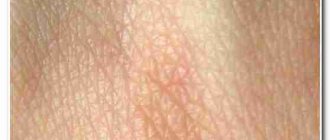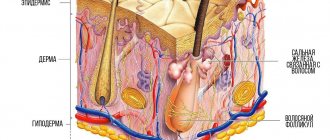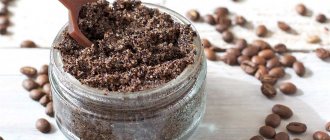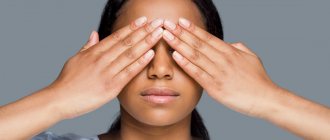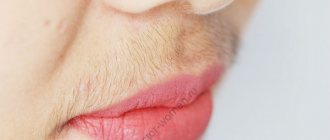What symptoms should you see a doctor urgently?
People often resort to self-diagnosis of diseases when identifying changes in the skin. The Internet is replete with articles detailing the symptoms and treatment of diseases. But there are many dangerous symptoms, if detected, you should immediately contact a specialist.
1. Rash
. The rash is a symptom of many diseases, both skin and related to other organs. Rashes can be a symptom of an allergic reaction, stress, gastrointestinal pathology, and even cancer. If the rash is brightly colored and does not go away for more than 48 hours, do not delay visiting a specialist.
2. Warts
. The appearance of warts on the skin is caused by various strains of the human papillomavirus. The virus is transmitted from person to person, so if you find papillomas or condylomas on any part of the body, you should make an appointment with a dermatologist or dermatovenerologist.
3. Peeling
. A seemingly harmless symptom can serve as a signal of a dangerous disease. If peeling skin is accompanied by prolonged itching, redness and severe dryness, it is better to consult a doctor for an accurate diagnosis and treatment. If peeling has become the skin’s response to exposure to frost, sun or wind, then we recommend that you protect your skin more carefully and use special creams.
4. Change in skin color
. A change in skin color after tanning or peeling is quite understandable, but if you find suddenly appearing spots on your body or face, this is a reason to make an appointment with a doctor. Red spots can signal an acute allergic reaction or gastrointestinal diseases, yellowing of the skin is one of the symptoms of hepatitis B and C, dark spots can indicate necrotic processes.
TOP 5 skin diseases
Skin diseases are quite common and can appear at any age. They cause physical discomfort to a person, force them to hide the affected areas under thick clothing or use cosmetics to hide imperfections.
Fortunately, modern dermatology successfully fights skin diseases. And here are the 5 most common of them.
1. Acne.
Acne, or acne, is an inflammatory skin disease that occurs as a result of blockage of the sebaceous glands. More than 80% of the world's population is prone to acne, most of them are teenagers. The disease begins with the appearance of acne, blackheads and papules (inflammatory nodules). If you are the parent of a teenager with acne, bring him to see a doctor in order to treat the disease in time and prevent its complications, or come yourself if you suddenly encounter the disease as an adult.
2. Atopic dermatitis.
Another inflammatory skin disease is atopic dermatitis. The disease is especially common among children (10–15% in developed countries). The disease is accompanied by redness of the top layer of skin, dryness and severe itching. A complete cure of the patient is impossible, but to mitigate the course of the disease, moisturizing medicinal ointments and local immunomodulators are used. Ignoring the disease can lead to serious complications and the development of skin infections.
3. Psoriasis.
Another common disease (about 5% in developed countries) is psoriasis. This is a chronic inflammatory non-infectious disease, which is characterized by the appearance of bright pink or red plaques on different parts of the body and head. In addition, there is severe burning and itching, dry skin. If left untreated, the risk of stroke increases and internal organs such as the liver and kidneys are also affected.
4. Herpes simplex.
One of the most common viral skin diseases. Antibodies to this virus are found in 90% of people. The main symptom of herpes is blisters filled with liquid that appear in the mucous membranes, most often the lips or nose. Lack of treatment can provoke a decrease in immunity and, as a result, an increased risk of acquiring new diseases.
5. Viral warts.
A common viral skin disease caused by the papilloma virus entering human skin cells. The virus is often transmitted through everyday contact (shaking hands, using objects of the carrier) or sexually. Convex nodules called warts form at the site of virus penetration. The danger of the disease is that the virus has oncogenic strains that can lead to the development of cancer.
Fortunately, there are few such strains, but it is worth checking to eliminate risks. This is especially true for women, because HPV is the first and most important cause of cervical cancer.
How does stress affect skin and acne?
Acne is the most common dermatological problem, the fight against which began in ancient times. Mention of acne can be found in the writings of Aristotle and Hippocrates, where they associate the appearance of rashes on the face with puberty. However, many years of dermatological research make it clear that often acne has nothing to do with age - you can wake up in the morning and find inflammation on your nose or cheeks at 13 years old or at 33 years old. The condition of the skin depends on many factors: nutrition, environment, bad habits and stress.
Acne as a consequence of stress
The relationship between acne and stress has been talked about for a long time, but research and evidence on this issue has appeared relatively recently. Nervous situations respond with many changes in the human body. One of them is the production of the hormone cortisol, which is responsible for the regulation of carbohydrate metabolism. Cortisol also has a second name - the stress hormone - from which another of its functions follows: it is produced in the adrenal glands and is designed to help the body cope with stress, but its excess negatively affects the skin and leads to acne.
Typically, the level of cortisol is associated with a person’s circadian rhythms: in the morning the amount of the hormone in the blood reaches its limit, and closer to the night, when we are about to go to bed, its level drops. Severe stressful situations lead to intense production of cortisol, and it provokes hyperplasia of the sebaceous glands. They begin to produce more sebum (sebum), which leads to clogged pores and the formation of acne. In addition, it has been proven that excess cortisol reduces the barrier functions of the skin, which means that it reacts more strongly not only to the internal causes of rashes, but also to pollution from the environment. Additionally, according to a study from Ohio University, skin regeneration is also significantly associated with cortisol levels. Scientists have concluded that an increase in the stress hormone in the blood slows down the healing of wounds and other skin lesions. Consequently, scars and post-acne marks will disappear from the skin much more slowly under increased stress.
Also, under stress, changes in intestinal flora occur, which reduces local immunity and also affects the skin. The results of such failures are an exacerbation of acne, often all over the body, and not just on the face.
Science of the Skin and Nervous System
Mental health is a very delicate matter: with constant stress or other internal discomfort, help should first be sought from specialists. The relationship between the nervous system and the skin could not go unnoticed, so recently the science known as psychodermatology has been gaining popularity.
The topics that psychodermatology studies are quite diverse and include several ways in which the skin and mind interact. Psychodermatologists work with patients whose depression may have been worsened by psoriasis or eczema, or with those whose psychological problems result in skin problems - where people deliberately harm themselves. The most difficult thing for psychodermatology is to study and understand exactly how emotional stress affects the skin. Largely thanks to research in this area, it became known how the skin responds to an excess of cortisol in the blood.
Plant-derived stress protectors
Another trend in recent years is adaptogens. These are substances of plant or animal origin that help the human body fight stress. Their positive effects were known back in Ancient China and India, but for the popularization of adaptogens in the modern world we should thank our compatriot, the famous toxicologist Nikolai Lazarev. Back in the middle of the last century, Lazarev introduced the term “adaptogens” into use, naming substances that have a positive effect on the human nervous system. In the 1960s, Lazarev’s work was continued by his students: Israel Brekhman and Igor Dardymov.
Thanks to their research, it became known that plant-based adaptogens reduce the harm caused by stress, have a positive stimulating effect on the human body, do not cause side effects and - most importantly - should not harm health.
Subsequent studies of adaptogens have shed light on the fact that they have a positive effect on the functioning of the adrenal glands and can reduce the overproduction of the stress hormone cortisol.
Of course, this does not mean that you should run to the pharmacy or the nearest Ayurveda shop for adaptogenic herbs and berries in the hope that they will get rid of acne. Before introducing adaptogens into your diet, you should consult with specialists. In addition, we must not forget about an integrated approach to solving the problem and cosmetic products aimed at combating rashes. A conscious path to restoring health is always better than spontaneous attempts at treatment.
What do experts advise?
It is obvious that in the modern world, chronic stress and poor sleep are closely related to skin condition. Stress systematically disrupts the balance of our endocrine system, leading to an increase in cortisol levels with subsequent changes in the functioning of the thyroid, gonads and other endocrine glands. This in turn can cause an increase in skin oiliness and a decrease in local immunity. That is why, against the background of prolonged negative experiences, new rashes may appear, or an already attenuated process may worsen.
The most correct thing in such a situation is to establish a full, healthy sleep, ideally, from 10 to 11 pm you should already fall asleep, since it is during this period that melatonin is actively produced - a very important hormone that protects us
Also, do not neglect the help of a psychotherapist and a dermatologist-cosmetologist - they will help you cope with this condition with the minimum possible losses.
The good news is that the negative effects of stress on your skin can be reversed. First of all, it is necessary to neutralize the manifestations of stress and learn to relax. Yoga, meditation, work with psychologists and psychotherapists, as well as neurophysiologists will help build therapy to regulate the nervous system.
In parallel with the normalization of the nervous system, acne therapy is carried out directly, depending on the severity of the disease. Nowadays, external skin care products that influence the skin microbiome and regulate sebum secretion are very relevant.
Back to list
How to treat skin diseases
Unfortunately, there is no one universal remedy for treating skin diseases. After diagnosis, the doctor prescribes treatment that is appropriate in your case. It can be:
- Healing ointments and balms (healing, anti-inflammatory, hormonal, antibacterial)
- Oral medications (antibiotics, hormonal agents, immunomodulators)
- Physiotherapy (laser, magnetic therapy)
- Cosmetic procedures (cleansing, peeling, moisturizing masks)
- Cosmeceuticals (lotions, tonics, creams, masks)
Should you prescribe treatment yourself? Everyone decides for themselves. But we still want to warn you. Of course, if you have gone a little overboard with tanning or have several inflammations on your face due to the approaching critical days, then you can do without a doctor. But when it comes to serious diseases - psoriasis, allergies, dermatitis - self-medication can lead to worsening symptoms.
Contact specialists who will help you choose effective treatment. In the “Health” network of clinics, appointments are conducted by dermatologists and dermatovenerologists. They will conduct an examination, prescribe the necessary tests and help cope with the disease.
We are waiting for you at any of our branches!
Stress and skin diseases
The skin is highly sensitive to psychogenic and situational influences.
Psychogenic skin itching, local or generalized hyperhidrosis (sweating), etc. are prone to reverse development after stress is relieved.
There is a group of dermatoses whose manifestation and subsequent recurrence are mediated by mental trauma.
The skin more often than other body systems becomes an “accomplice” of mental illnesses ( neurotic excoriations, trichotillomania, zoopathic delusions, dysmorphophobia, cheilophagia, onychophagia , etc.)
Along with vulnerability to stress, expressed in the form of dermatoses, inverse relationships are also observed.
Dermatological diseases with a chronic course, torpid to therapy, accompanied by severe itching and rashes, localized in “intimate places”, as well as on open areas of the skin, can themselves cause severe stress and provoke psychogenic disorders.
Zoopathic (dermatozoal) delirium . Patients are convinced that they are infected with scabies or other parasites. They “see”, “feel”, “touch” insects. This state of affairs at the current level of knowledge is the subject of debate. Many researchers consider this a manifestation of organic damage to the central nervous system. Others consider this condition within the framework of schizophrenia, its debut.
Such patients require microscopic and other examinations of materials containing insect or parasite “particles.”
The epithelium, villi, and pellets are filled into special containers (“matchbox symptom”) and provided in the laboratory as larvae, eggs, or waste products of parasites.
A negative answer is seen only as a reason to expand the range of institutions for providing “material evidence.”
Fighting parasites, handling disinfection requirements, own methods of control, including “poisoning insects from the body,” can take on the nature of self-harmful actions: cauterization, use of scissors, needles, razor blades. These injuries are located on easily accessible areas of the body - the face, upper and lower extremities, and the upper third of the back.
Such patients pay special attention to their linen - chemical treatment, washing, boiling, ironing several times a day, changing their wardrobe.
Neurotic (psychogenic) excoriations are actions accompanied by self-harm, which are preceded by feelings of discomfort and itching of the skin.
The desire for repeated scratching and removal of a non-existent rash leads to the formation of fresh excoriation scratches against the background of previously unchanged skin, followed by the formation of scars. Combing is often preceded by a visual inspection or touching the skin. After the stage of self-harm (when the scabs are torn off and the skin is combed), comes the stage of temporary relief, internal satisfaction. Then inevitably follows an increase in discomfort. Attempts to prevent or stop scratching are often ineffective.
Excoriated acne differs from neurotic excoriation in that it forms against the background of real acne.
In areas of systematic scratching, persistent destructive changes in the skin develop, accompanied by increased sensitivity to external irritants. In this case, erosions and scratching themselves can be accompanied by itching and burning. Thus, the somatic stimuli of scratching are also added to the psychopathological ones.
Voinilko M.V.


